i4D - benchmarks
Project of MTA SZTAKI
SZTAKI Lidar Gait-and-Activity (SZTAKI-LGA) database
The SZTAKI Lidar Gait-and-Activity (SZTAKI-LGA) database has been created by the authors of [1] for the purpose of evaluating gait based person identification and activity recognition algorithms in multi-pedestrian environments based on real time Lidar measurements of a Velodyne HDL 64-E sensor. The database can be downloaded here.
Gait recognition database
The database used for gait analysis contains 10 outdoor sequences, whose properties of the sequences are summarized in Table 1. In all scenarios, the test subjects circulate in a courtyard, then they leave the Field-of-view for a while, and re-appear later in a different order. A straightforward goal can be to match the corresponding gait patterns collected in the first (training) and second (probe) parts of each test scenario.
| Sequence name | Num. people |
Max frame num |
Length |
| Winter0 | 4 |
3649 |
3:30 |
| Winter1 | 6 |
2433 |
2:42 |
| Spring0 | 6 |
2616 |
2:54 |
| Spring1 | 8 |
2383 |
2:39 |
| Summer0 | 6 |
2435 |
2:42 |
| Summer1 | 3 |
1186 |
1:19 |
| Summer2 | 4 |
1843 |
2:03 |
| Summer3 | 4 |
1815 |
2:01 |
| Summer4 | 4 |
1987 |
2:12 |
| Summer5 | 4 |
2057 |
2:14 |
| Average | 5 |
2240 |
2:30 |
Table 1. Main properties of the test sequences used for gait recognition.
Folder structure of the database: the LIDARGAITDB root folder contains the different sequences in different sub-folders (winter0,winter1,spring0, etc).
Each sequence folder has the following content:
1. meta file (metafile.txt) with two lines:
- First line: number of people
- Second line: global IDs, which are unique identifiers of the test persons in the whole database. This sort of encoding enables one to compare the gait patterns of an individual over various sequences, or create a unified gait database of at most 28 individuals from the different test sets.
- The point cloud sequences are sorted in subfolders denoted by the global ID of the person, and the index of the extracted trajectory (the same person my appear in a sequence in multiple times)
- For example: Person No.2 was detected twice in the "Summer0" sequence, the first trajectory part is in folder "summer0\02a" and the second trajectory part in "summer0\02b".
- The pcd files are named by the frame number (between 0 and "Max frame num" for each sequence), e.g. 106.pcd from the "summer0\02a" folder contains Person No.2's point cloud
- frame_number: frame index of the point cloud - same as the pcd filename
- center_x and center_y: 2D position coordinates of the walking person on the ground
- theta: orientation of the 2D trajectory's tangent at the object position
2. point cloud sequences in a binary "pcd" format (XYZ, floating point coordinates)
Sample gait cycles from side-view:
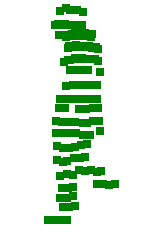
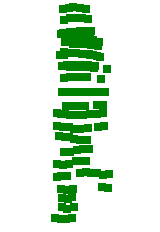
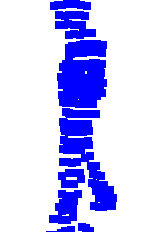
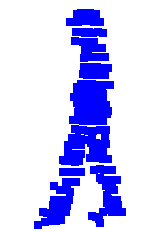
Fig 1. Silhouette sequences from "spring0": 02a, 02b, 03a, 03b
Point clouds in 3D
Person point clouds are stored in raw 3D XYZ formats, therefore approaches other than sideview silhouette projection (Fig.1) can be analysed with the database:
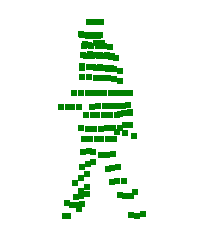
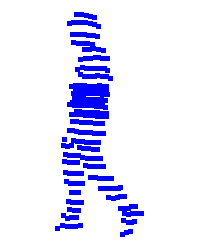
\spring0\02a\802.pcd \spring0\03b\1518.pcd
Activity recognition database
The activity database contains five events: bend, check watch, phone call, wave and two-handed wave (wave2) actions. Four sequences have been recorded (both indoor and outdoor) with the following parameters:
Num. people |
Length |
Bend |
Watch |
Phone |
Wawe |
Wave2 |
|
| Indoor1 | 3 |
2:30 |
8 |
2 |
5 |
3 |
3 |
| Outdoor1 | 1 |
1:00 |
2 |
1 |
1 |
2 |
0 |
| Outdoor2 | 3 |
1:30 |
6 |
5 |
2 |
5 |
0 |
| Outdoor3 | 4 |
1:30 |
7 |
4 |
3 |
7 |
4 |
Table 2. Main properties of the test sequences used for action recognition.
Apart from Outdoor1, all sequences include multi-target scenarios, where the people had to be separated and tracked (similarly to gait data generation). We attempted to save all pointclouds with frontal orientation, always facing the local trajectory tangents.
The database contains a separate folder for each action, where the samples different sequences from Table 2 are simple merged. For example the "bend" subfolder includes 23 folders (0-22), each of them contains pcd sequences corresponding to different action instances.
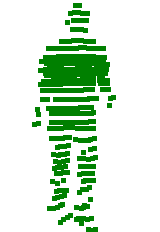
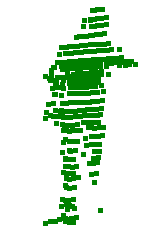


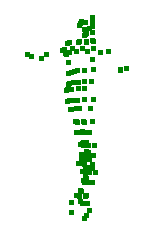
bend check watch phone call wave wave two hand
Download
Download the SZTAKI-LGA Database: Part 1 - gait recognition (303MB), Part 2 - activity recognition (16MB).
For password, please contact Csaba Benedek in e-mail: benedek.csaba_at_sztaki.mta.hu
Reference
[1] C. Benedek, B. Gálai, B. Nagy and Z. Jankó: "Lidar-based Gait Analysis and Activity Recognition in a 4D Surveillance System,"IEEE Trans. on Circuits and Systems for Video Technology, 2016, ![]()